The United States of America (USA), commonly referred to as the United States (U.S.) or America, is a federal republic composed of 50 states, the federal district of Washington, D.C., five major territories, and various possessions.[fn 1] The 48 contiguous states and Washington, D.C. are in central North Americabetween Canada and Mexico. The state of Alaska is in the northwestern part of North America and the state of Hawaii is an archipelago in the mid-Pacific. Theterritories are scattered about the Pacific Ocean and the Caribbean Sea. At 3.8 million square miles (9.9 million km2)[18] and with over 320 million people, the country is the world's third largest by total area (fourth largest by land area)[fn 2] and the third most populous. It is one of the world's most ethnically diverse and multiculturalnations, the product of large-scale immigration from many countries.[24] The geography and climate are also extremely diverse, and the country is home to a wide variety of wildlife.[25]
Paleo-Indians migrated from Asia to what is now the U.S. mainland at least 15,000 years ago,[26] with European colonization beginning in the 16th century. The United States emerged from 13 British colonies along the East Coast. Numerous disputes between Great Britain and the colonies led to the American Revolution, which began in 1775. On July 4, 1776, as the colonies were fighting Great Britain in the American Revolutionary War, delegates from the 13 colonies unanimously adopted the Declaration of Independence. The war ended in 1783 with recognition of the independence of the United States by the Kingdom of Great Britain, and was the first successful war of independence against a European colonial empire.[27] The current constitution was adopted in 1788, after the Articles of Confederation, adopted in 1781, was felt to be a failure. The first ten amendments, collectively named the Bill of Rights, were ratified in 1791 and designed to guarantee many fundamental civil liberties.
The United States embarked on a vigorous expansion across North America throughout the 19th century.[28] This involved displacing American Indian tribes,acquiring new territories, and gradually admitting new states and by 1848 the nation spanned the continent.[28] During the second half of the 19th century, theAmerican Civil War led to the end of legal slavery in the country.[29][30] By the end of that century, the United States extended into the Pacific Ocean,[31] and its economy, driven in large part by the Industrial Revolution, began to soar.[32] The Spanish–American War and World War I confirmed the country's status as a global military power. The United States emerged from World War II as a global superpower, the first country to develop nuclear weapons, the only country to use them in warfare, and a permanent member of the United Nations Security Council. The end of the Cold War and the dissolution of the Soviet Union in 1991 left the United States as the world's sole superpower.[33]
The United States is a developed country and has the world's largest economy by nominal and real GDP, benefiting from an abundance of natural resources and high worker productivity.[34] Moreover, it ranks among the top 10 in the world in several measures of economic well-being, including average wage,[35] Human Development Index, and per capita GDP. While the U.S. economy is considered post-industrial, the country continues to be one of the world's largest manufacturers.[36] Accounting for 34% of global military spending[37] and 23% of world GDP,[38] it is the world's foremost military and economic power, a prominent political and cultural force, and a leader in scientific research and technological innovations.[39]
Contents
[hide]Etymology
See also: Naming of America, Names for United States citizens, American (word), and Names of the United States
In 1507 the German cartographer Martin Waldseemüller produced a world map on which he named the lands of the Western Hemisphere "America" after the Italian explorer and cartographer Amerigo Vespucci (Latin: Americus Vespucius).[40] The first documentary evidence of the phrase "United States of America" is from a letter dated January 2, 1776, written by Stephen Moylan, Esq., George Washington's aide-de-camp and Muster-Master General of the Continental Army. Addressed to Lt. Col. Joseph Reed, Moylan expressed his wish to carry the "full and ample powers of the United States of America" to Spain to assist in the revolutionary war effort.[41]
The first known publication of the phrase "United States of America" was in an anonymous essay in The Virginia Gazette newspaper in Williamsburg, Virginia, on April 6, 1776.[42][43] The second draft of the Articles of Confederation, prepared by John Dickinson and completed by June 17, 1776, at the latest, declared "The name of this Confederation shall be the 'United States of America.'"[44] The final version of the Articles sent to the states for ratification in late 1777 contains the sentence "The Stile of this Confederacy shall be 'The United States of America'".[45] In June 1776, Thomas Jefferson wrote the phrase "UNITED STATES OF AMERICA" in all capitalized letters in the headline of his "original Rough draught" of the Declaration of Independence.[46][47] This draft of the document did not surface until June 21, 1776, and it is unclear whether it was written before or after Dickinson used the term in his June 17 draft of the Articles of Confederation.[44] In the final Fourth of July version of the Declaration, the title was changed to read, "The unanimous Declaration of the thirteen united States of America".[48] Thepreamble of the Constitution states "...establish this Constitution for the United States of America."
The short form "United States" is also standard. Other common forms are the "U.S.", the "USA", and "America". Colloquial names are the "U.S. of A." and, internationally, the "States". "Columbia", a name popular in poetry and songs of the late 1700s, derives its origin from Christopher Columbus; it appears in the name "District of Columbia".[49] In non-English languages, the name is frequently the translation of either the "United States" or "United States of America", and colloquially as "America". In addition, an abbreviation (e.g. USA) is sometimes used.[50]
The phrase "United States" was originally plural, a description of a collection of independent states—e.g., "the United States are"—including in the Thirteenth Amendment to the United States Constitution, ratified in 1865. The singular form—e.g., "the United States is"— became popular after the end of the American Civil War. The singular form is now standard; the plural form is retained in the idiom "these United States".[51] The difference is more significant than usage; it is a difference between a collection of states and a unit.[52]
A citizen of the United States is an "American". "United States", "American" and "U.S." refer to the country adjectivally ("American values", "U.S. forces"). "American" rarely refers to subjects not connected with the United States.[53]
History
Main articles: History of the United States, Timeline of United States history, American business history, Economic history of the United States and Labor history of the United States
Indigenous and European contact
Further information: Pre-Columbian era and Colonial history of the United States
The first inhabitants of North America migrated from Siberia by way of the Bering land bridge and arrived at least 15,000 years ago, though increasing evidence suggests an even earlier arrival.[26] Some, such as the pre-Columbian Mississippian culture, developed advanced agriculture, grand architecture, and state-level societies.[54] After the Spanish conquistadors made the first contacts, the native population declined for various reasons, primarily diseases such as smallpox and measles. Violence was not a significant factor in the overall decline, though it impacted specific tribes and colonial settlements.[55][56][57][58][59][60] In the Hawaiian Islands, the earliest indigenous inhabitants arrived around 1 AD from Polynesia. Europeans under the British explorer Captain James Cook arrived in the Hawaiian Islands in 1778.
In the early days of colonization, many European settlers were subject to food shortages, disease, and attacks from Native Americans. Native Americans were also often at war with neighboring tribes and allied with Europeans in their colonial wars. At the same time, however, many natives and settlers came to depend on each other. Settlers traded for food and animal pelts, natives for guns, ammunition and other European wares.[61] Natives taught many settlers where, when and how to cultivate corn, beans and squash. European missionaries and others felt it was important to "civilize" the Native Americans and urged them to adopt European agricultural techniques and lifestyles.[62][63]
Settlements
Further information: European colonization of the Americas and Thirteen Colonies
After Spain sent Columbus' on his first voyage to the New World in 1492, other explorers followed. The Spanish set up small settlements in New Mexico and Florida. France had several small settlements along the Mississippi River. Successful English settlement on the eastern coast of North America began with the Virginia Colony in 1607 at Jamestown and the Pilgrims' Plymouth Colony in 1620. Early experiments in communal living failed until the introduction of private farm holdings.[64] Many settlers were dissenting Christian groups who came seeking religious freedom. The continent's first elected legislative assembly, Virginia's House of Burgesses created in 1619, and the Mayflower Compact, signed by the Pilgrims before disembarking, established precedents for the pattern of representative self-government and constitutionalism that would develop throughout the American colonies.[65][66]
Most settlers in every colony were small farmers, but other industries developed within a few decades as varied as the settlements. Cash crops included tobacco, rice and wheat. Extraction industries grew up in furs, fishing and lumber. Manufacturers produced rum and ships, and by the late colonial period Americans were producing one-seventh of the world's iron supply.[67] Cities eventually dotted the coast to support local economies and serve as trade hubs. English colonists were supplemented by waves of Scotch-Irish and other groups. As coastal land grew more expensive freed indentured servants pushed further west.[68]
Slave cultivation of cash crops began with the Spanish in the 1500s, and was adopted by the English, but life expectancy was much higher in North America because of less disease and better food and treatment, leading to a rapid increase in the numbers of slaves.[69][70][71] Colonial society was largely divided over the religious and moral implications of slavery and colonies passed acts for and against the practice.[72][73] But by the turn of the 18th century, African slaves were replacing indentured servants for cash crop labor, especially in southern regions.[74]
With the British colonization of Georgia in 1732, the 13 colonies that would become the United States of America were established.[75] All had local governments with elections open to most free men, with a growing devotion to the ancient rights of Englishmen and a sense of self-government stimulating support for republicanism.[76] With extremely high birth rates, low death rates, and steady settlement, the colonial population grew rapidly. Relatively small Native American populations were eclipsed.[77] The Christian revivalist movement of the 1730s and 1740s known as the Great Awakening fueled interest in both religion and religious liberty.[78]
In the French and Indian War, British forces seized Canada from the French, but the francophone population remained politically isolated from the southern colonies. Excluding the Native Americans, who were being conquered and displaced, those 13 colonies had a population of over 2.1 million in 1770, about one-third that of Britain. Despite continuing new arrivals, the rate of natural increase was such that by the 1770s only a small minority of Americans had been born overseas.[79] The colonies' distance from Britain had allowed the development of self-government, but their success motivated monarchs to periodically seek to reassert royal authority.[80]
Independence and expansion (1776–1865)
Further information: American Revolutionary War, United States Declaration of Independence, and American Revolution
The American Revolutionary War was the first successful colonial war of independence against a European power. Americans had developed an ideology of "republicanism" asserting that government rested on the will of the people as expressed in their local legislatures. They demanded their rights as Englishmen, "no taxation without representation". The British insisted on administering the empire through Parliament, and the conflict escalated into war.[81]
Following the passage of the Lee Resolution, on July 2, 1776, which was the actual vote for independence, the Second Continental Congress adopted the Declaration of Independence, on July 4, which proclaimed, in a long preamble, that humanity is created equal in their unalienable rights and that those rights were not being protected by Great Britain, and declared, in the words of the resolution, that the Thirteen Colonies were independent states and had no allegiance to the British crown in the United States. The fourth day of July is celebrated annually as Independence Day. In 1777, the Articles of Confederation established a weak government that operated until 1789.[82]
Britain recognized the independence of the United States following their defeat at Yorktown.[83] In the peace treaty of 1783, American sovereignty was recognized from the Atlantic coast west to the Mississippi River. Nationalists led the Philadelphia Convention of 1787 in writing the United States Constitution, ratified in state conventions in 1788. The federal government was reorganized into three branches, on the principle of creating salutary checks and balances, in 1789. George Washington, who had led the revolutionary army to victory, was the first president elected under the new constitution. The Bill of Rights, forbidding federal restriction of personal freedoms and guaranteeing a range of legal protections, was adopted in 1791.[84]
Although the federal government criminalized the international slave trade in 1808, after 1820, cultivation of the highly profitable cotton crop exploded in the Deep South, and along with it, the slave population.[85][86][87] The Second Great Awakening, beginning about 1800, converted millions to evangelical Protestantism. In the North, it energized multiple social reform movements, including abolitionism;[88] in the South, Methodists and Baptists proselytized among slave populations.[89]
Americans' eagerness to expand westward prompted a long series of American Indian Wars.[90] The Louisiana Purchase of French-claimed territory in 1803 almost doubled the nation's size.[91] The War of 1812, declared against Britain over various grievances and fought to a draw, strengthened U.S. nationalism.[92] A series of U.S. military incursions into Florida led Spain to cede it and other Gulf Coast territory in 1819.[93]Expansion was aided by steam power, when steamboats began traveling along America's large water systems, which were connected by new canals, such as the Erie and the I&M; then, even faster railroads began their stretch across the nation's land.[94]
From 1820 to 1850, Jacksonian democracy began a set of reforms which included wider male suffrage; it led to the rise of the Second Party System of Democrats and Whigs as the dominant parties from 1828 to 1854. The Trail of Tears in the 1830s exemplified the Indian removal policy that moved Indians into the west to their own reservations. The U.S. annexed the Republic of Texas in 1845 during a period of expansionist Manifest destiny.[95] The 1846 Oregon Treaty with Britain led to U.S. control of the present-dayAmerican Northwest.[96] Victory in the Mexican–American War resulted in the 1848 Mexican Cession of California and much of the present-day American Southwest.[97]
The California Gold Rush of 1848–49 spurred western migration and the creation of additional western states.[98] After the American Civil War, new transcontinental railwaysmade relocation easier for settlers, expanded internal trade and increased conflicts with Native Americans.[99] Over a half-century, the loss of the American bison (sometimes called "buffalo") was an existential blow to many Plains Indians cultures.[100] In 1869, a new Peace Policy sought to protect Native-Americans from abuses, avoid further war, and secure their eventual U.S. citizenship, although conflicts, including several of the largest Indian Wars, continued throughout the West into the 1900s.[101]
Civil War and Reconstruction Era
Further information: American Civil War and Reconstruction Era
Differences of opinion and social order between northern and southern states in early United States society, particularly regarding Black slavery, ultimately led the U.S. into the American Civil War.[102] Initially, states entering the Union alternated between slave and free states, keeping a sectional balance in the Senate, while free states outstripped slave states in population and in the House of Representatives. But with additional western territory and more free-soil states, tensions between slave and free states mounted with arguments over federalism and disposition of the territories, whether and how to expand or restrict slavery.[103]
With the 1860 election of Abraham Lincoln, the first president from the largely anti-slavery Republican Party, conventions in thirteen slave states ultimately declared secession and formed the Confederate States of America, while the U.S. government maintained that secession was illegal.[103] The ensuing war was at first for Union, then after 1863 as casualties mounted and Lincoln delivered his Emancipation Proclamation, a second war aim became abolition of slavery. The war remains the deadliest military conflict in American history, resulting in the deaths of approximately 618,000 soldiers as well as many civilians.[104]
Following the Union victory in 1865, three amendments to the U.S. Constitution brought about the prohibition of slavery, gave U.S. citizenship to the nearly four million African Americans who had been slaves,[105] and promised them voting rights. The war and its resolution led to a substantial increase in federal power[106] aimed at reintegrating and rebuilding the Southern states while ensuring the rights of the newly freed slaves.[107] Following the Reconstruction Era, throughout the South Jim Crow laws soon effectivelydisenfranchised most blacks and some poor whites. Over the subsequent decades, in both the North and the South blacks and some whites faced systemic discrimination, including racial segregation and occasionalvigilante violence, sparking national movements against these abuses.[107]
Industrialization
Main articles: Economic history of the United States and Technological and industrial history of the United States
In the North, urbanization and an unprecedented influx of immigrants from Southern and Eastern Europe supplied a surplus of labor for the country's industrialization and transformed its culture.[108] National infrastructure including telegraph and transcontinental railroads spurred economic growth and greater settlement and development of theAmerican Old West. The later invention of electric light and the telephone would also impact communication and urban life.[109]
The end of the Indian Wars further expanded acreage under mechanical cultivation, increasing surpluses for international markets.[110] Mainland expansion was completed by the purchase of Alaska from Russia in 1867.[111] In 1893, pro-American elements in Hawaii overthrew the monarchy and formed the Republic of Hawaii, which the U.S.annexed in 1898. Puerto Rico, Guam, and the Philippines were ceded by Spain in the same year, following the Spanish–American War.[112]
Rapid economic development at the end of the 19th century produced many prominent industrialists, and the U.S. economy became the world's largest.[113] Dramatic changes were accompanied by social unrest and the rise of populist, socialist, and anarchist movements.[114] This period eventually ended with the advent of the Progressive Era, which saw significant reforms in many societal areas, including women's suffrage, alcohol prohibition, regulation of consumer goods, greater antitrust measures to ensure competition and attention to worker conditions.
World War I, Great Depression, and World War II
The United States remained neutral from the outbreak of World War I, in 1914, until 1917 when it joined the war as an "associated power", alongside the formal Allies of World War I, helping to turn the tide against the Central Powers. In 1919, President Woodrow Wilson took a leading diplomatic role at the Paris Peace Conference and advocated strongly for the U.S. to join the League of Nations. However, the Senate refused to approve this, and did not ratify the Treaty of Versailles that established the League of Nations.[115]
In 1920, the women's rights movement won passage of a constitutional amendment granting women's suffrage.[116] The 1920s and 1930s saw the rise of radio for mass communication and the invention of early television.[117] The prosperity of the Roaring Twenties ended with the Wall Street Crash of 1929 and the onset of the Great Depression. After his election as president in 1932, Franklin D. Roosevelt responded with the New Deal, which included the establishment of the Social Security system.[118]The Great Migration of millions of African Americans out of the American South began before World War I and extended through the 1960s;[119] whereas the Dust Bowl of the mid-1930s impoverished many farming communities and spurred a new wave of western migration.[120]
At first effectively neutral during World War II while Germany conquered much of continental Europe, the United States began supplying material to the Allies in March 1941 through the Lend-Lease program. On December 7, 1941, the Empire of Japan launched a surprise attack on Pearl Harbor, prompting the United States to join the Allies against the Axis powers.[121] During the war, the United States was referred as one of the "Four Policemen"[122] of Allies power who met to plan the postwar world, along with Britain, the Soviet Union and China.[123][124] Though the nation lost more than 400,000 soldiers,[125] it emerged relatively undamaged from the war with even greater economic and military influence.[126]
The United States played a leading role in the Bretton Woods and Yalta conferences with the United Kingdom, the Soviet Union and other Allies, which signed agreements on new international financial institutions and Europe's postwar reorganization. As an Allied victory was won in Europe, a 1945 international conference held in San Francisco produced the United Nations Charter, which became active after the war.[127] The United States developed the first nuclear weapons and used them on Japan; the Japanese surrendered on September 2, ending World War II.[128]
Cold War and civil rights era
Main articles: History of the United States (1945–64), History of the United States (1964–80) and History of the United States (1980–91)
After World War II the United States and the Soviet Union jockeyed for power during what is known as the Cold War, driven by an ideological divide between capitalism andcommunism[129] and, according to the school of geopolitics, a divide between the maritime Atlantic and the continental Eurasian camps. They dominated the military affairs ofEurope, with the U.S. and its NATO allies on one side and the USSR and its Warsaw Pact allies on the other. The U.S. developed a policy of containment towards the expansion of communist influence. While the U.S. and Soviet Union engaged in proxy wars and developed powerful nuclear arsenals, the two countries avoided direct military conflict.
The U.S. often opposed Third World movements that it viewed as Soviet-sponsored. American troops fought communist Chinese and North Korean forces in the Korean War of 1950–53.[130] The Soviet Union's 1957 launch of the first artificial satellite and its 1961 launch of the first manned spaceflight initiated a "Space Race" in which the United States became the first nation to land a man on the moon in 1969.[130] A proxy war in Southeast Asia eventually evolved into full American participation, as the Vietnam War.
At home, the U.S. experienced sustained economic expansion and a rapid growth of its population and middle class. Construction of an Interstate Highway System transformed the nation's infrastructure over the following decades. Millions moved from farms and inner cities to large suburban housing developments.[131][132] In 1959 Hawaii became the 50th and last state added to the US.[133] A growing civil rights movement used nonviolence to confront segregation and discrimination, with Martin Luther King, Jr. becoming a prominent leader and figurehead. A combination of court decisions and legislation, culminating in the Civil Rights Act of 1964, sought to end racial discrimination.[134][135][136]Meanwhile, a counterculture movement grew which was fueled by opposition to the Vietnam war, black nationalism, and the sexual revolution. The launch of a "War on Poverty" expanded entitlements and welfare spending.[137]
The 1970s and early 1980s saw the onset of stagflation. After his election in 1980, President Ronald Reagan responded to economic stagnation with free-market oriented reforms. Following the collapse of détente, he abandoned "containment" and initiated the more aggressive "rollback" strategy towards the USSR.[138][139][140][141][142] After a surge in female labor participation over the previous decade, by 1985 the majority of women aged 16 and over were employed.[143]
The late 1980s brought a "thaw" in relations with the USSR, and its collapse in 1991 finally ended the Cold War.[144][145][146][147] This brought about unipolarity[148] with the U.S. unchallenged as the world's dominant superpower. The concept of Pax Americana, which had appeared in the post-World War II period, gained wide popularity as a term for the post-Cold War new world order.
Contemporary history
Main article: History of the United States (1991–present)
After the Cold War, the 1990s saw the longest economic expansion in modern U.S. history, ending in 2001.[149] Originating in U.S. defense networks, theInternet spread to international academic networks, and then to the public in the 1990s, greatly impacting the global economy, society, and culture.[150]On September 11, 2001, Al-Qaeda terrorists struck the World Trade Center in New York City and the Pentagon near Washington, D.C., killing nearly 3,000 people.[151] In response, the United States launched the War on Terror, which included war in Afghanistan and the 2003–11 Iraq War.[152][153]
Beginning in 1994, the U.S. entered into the North American Free Trade Agreement (NAFTA), linking 450 million people producing $17 trillion worth of goods and services. The goal of the agreement was to eliminate trade and investment barriers among the U.S., Canada, and Mexico by January 1, 2008; trade among the partners has soared since the agreement went into force.[154]
Barack Obama, the first African American,[155] and multiracial[156] president, was elected in 2008 amid the Great Recession,[157] which began in December 2007 and ended in June 2009.[158]
Geography, climate, and environment
Main articles: Geography of the United States, Climate of the United States and Environment of the United States
The land area of the contiguous United States is 2,959,064 square miles (7.7 Mm2). Alaska, separated from the contiguous United States by Canada, is the largest state at 663,268 square miles (1.7 Mm2). Hawaii, occupying an archipelago in the central Pacific, southwest of North America, is 10,931 square miles (28,311 km2) in area. The populated territories of Puerto Rico, American Samoa, Guam, Northern Mariana Islands, and U.S. Virgin Islands together cover 9,185 square miles (23,789 km2).[159]
The United States is the world's third or fourth largest nation by total area (land and water), ranking behind Russia and Canada and just above or below China. The ranking varies depending on how two territories disputed by China and India are counted and how the total size of the United States is measured: calculations range from 3,676,486 square miles (9.5 Mm2)[160] to 3,717,813 square miles (9.6 Mm2)[161] to 3,796,742 square miles (9.8 Mm2)[5] to 3,805,927 square miles (9.9 Mm2).[18] Measured by only land area, the United States is third in size behind Russia and China, just ahead of Canada.[162]
The coastal plain of the Atlantic seaboard gives way further inland to deciduous forests and the rolling hills of the Piedmont.[163] The Appalachian Mountains divide the eastern seaboard from the Great Lakes and the grasslands of the Midwest.[164] The Mississippi–Missouri River, the world's fourth longest river system, runs mainly north–south through the heart of the country. The flat, fertile prairie of the Great Plains stretches to the west, interrupted by a highland region in the southeast.[164]
The Rocky Mountains, at the western edge of the Great Plains, extend north to south across the country, reaching altitudes higher than 14,000 feet (4,300 m) in Colorado.[165]Farther west are the rocky Great Basin and deserts such as the Chihuahua and Mojave.[166] The Sierra Nevada and Cascade mountain ranges run close to the Pacific coast, both ranges reaching altitudes higher than 14,000 feet (4,300 m). The lowest and highest points in the contiguous United States are in the state of California,[167] and only about 84 miles (135 km) apart.[168] At an elevation of 20,310 feet (6,190.5 m), Alaska's Denali (Mount McKinley) is the highest peak in the country and North America.[169]Active volcanoes are common throughout Alaska's Alexander and Aleutian Islands, and Hawaii consists of volcanic islands. The supervolcano underlying Yellowstone National Park in the Rockies is the continent's largest volcanic feature.[170]
The United States, with its large size and geographic variety, includes most climate types. To the east of the 100th meridian, the climate ranges from humid continental in the north to humid subtropical in the south.[171] The Great Plains west of the 100th meridian are semi-arid. Much of the Western mountains have an alpine climate. The climate is arid in the Great Basin, desert in the Southwest, Mediterranean in coastal California, and oceanic in coastal Oregon and Washington and southern Alaska. Most of Alaska is subarctic or polar. Hawaii and the southern tip of Florida are tropical, as are the populated territories in the Caribbean and the Pacific.[172] Extreme weather is not uncommon—the states bordering the Gulf of Mexico are prone to hurricanes, and most of the world's tornadoes occur within the country, mainly in Tornado Alley areas in the Midwest and South.[173]
Wildlife
Main articles: Fauna of the United States and Flora of the United States
See also: Category:Biota of the United States
The U.S. ecology is megadiverse: about 17,000 species of vascular plants occur in the contiguous United States and Alaska, and over 1,800 species of flowering plants are found in Hawaii, few of which occur on the mainland.[175] The United States is home to 428 mammal species, 784 bird species, 311 reptile species, and 295 amphibian species.[176] About 91,000 insect species have been described.[177] The bald eagle is both the national bird and national animal of the United States, and is an enduring symbol of the country itself.[178]
There are 58 national parks and hundreds of other federally managed parks, forests, and wilderness areas.[179] Altogether, the government owns about 28% of the country's land area.[180] Most of this is protected, though some is leased for oil and gas drilling, mining, logging, or cattle ranching; about .86% is used for military purposes.[181][182]
Environmental issues have been on the national agenda since 1970. Environmental controversies include debates on oil and nuclear energy, dealing with air and water pollution, the economic costs of protecting wildlife, logging and deforestation,[183][184] and international responses to global warming.[185][186] Many federal and state agencies are involved. The most prominent is the Environmental Protection Agency (EPA), created by presidential order in 1970.[187] The idea of wilderness has shaped the management of public lands since 1964, with the Wilderness Act.[188] The Endangered Species Act of 1973 is intended to protect threatened and endangered species and their habitats, which are monitored by the United States Fish and Wildlife Service.[189]
Demographics
Main articles: Demographics of the United States, Americans, List of U.S. states by population density and List of United States cities by population
Population
| Race/Ethnicity (2010 Census)[190] | |
|---|---|
| By race:[191] | |
| White | 72.41% |
| Black | 12.61% |
| Asian | 4.75% |
| Two or More Races | 9.11% |
| American Indian and Alaska Native | 0.95% |
| Native Hawaiian and Pacific Islander | 0.17% |
| By ethnicity:[191] | |
| Hispanic/Latino (of any race) | 17.4% |
| Non-Hispanic/Latino (of any race) | 82.6% |
The U.S. Census Bureau estimated the country's population to be 323 425 550 as of April 25, 2016, and to be adding 1 person (net gain) every 13 seconds, or about 6,646 people per day.[192] The U.S. population almost quadrupled during the 20th century, from about 76 million in 1900.[193] The third most populous nation in the world, after China and India, the United States is the only major industrialized nation in which large population increases are projected.[194] In the 1800s the average woman had 7.04 children, by the 1900s this number had decreased to 3.56.[195] Since the early 1970s the birth rate has been below the replacement rate of 2.1 with 1.86 children per woman in 2014. Foreign born immigration has caused the US population to continue its rapid increase with the foreign born population doubling from almost 20 million in 1990 to over 40 million in 2010, representing one third of the population increase.[196] The foreign born population reached 45 million in 2015.[197][fn 3]
The United States has a birth rate of 13 per 1,000, which is 5 births below the world average.[201] Its population growth rate is positive at 0.7%, higher than that of many developed nations.[202] In fiscal year 2012, over one million immigrants (most of whom entered through family reunification) were granted legal residence.[203]Mexico has been the leading source of new residents since the 1965 Immigration Act. China, India, and the Philippines have been in the top four sending countries every year since the 1990s.[204] As of 2012, approximately 11.4 million residents are illegal immigrants.[205] As of 2015, 47% of all immigrants are Hispanic, 26% are Asian, 18% are white and 8% are black. The percentage of immigrants who are Asian is increasing while the percentage who are Hispanic is decreasing.[197]
According to a survey conducted by the Williams Institute, nine million Americans, or roughly 3.4% of the adult population identify themselves as homosexual,bisexual, or transgender.[206][207] A 2012 Gallup poll also concluded that 3.5% of adult Americans identified as LGBT. The highest percentage came from the District of Columbia (10%), while the lowest state was North Dakota at 1.7%.[208] In a 2013 survey, the Centers for Disease Control and Prevention found that 96.6% of Americans identify as straight, while 1.6% identify as gay or lesbian, and 0.7% identify as being bisexual.[209]
In 2010, the U.S. population included an estimated 5.2 million people with some American Indian or Alaska Native ancestry (2.9 million exclusively of such ancestry) and 1.2 million with some native Hawaiian or Pacific island ancestry (0.5 million exclusively).[210] The census counted more than 19 million people of "Some Other Race" who were "unable to identify with any" of its five official race categories in 2010.[210]
The population growth of Hispanic and Latino Americans (the terms are officially interchangeable) is a major demographic trend. The 50.5 million Americans of Hispanic descent[210] are identified as sharing a distinct "ethnicity" by the Census Bureau; 64% of Hispanic Americans are of Mexican descent.[211] Between 2000 and 2010, the country's Hispanic population increased 43% while the non-Hispanic population rose just 4.9%.[212] Much of this growth is from immigration; in 2007, 12.6% of the U.S. population was foreign-born, with 54% of that figure born in Latin America.[213][fn 4]
About 82% of Americans live in urban areas (including suburbs);[5] about half of those reside in cities with populations over 50,000.[219] The US has numerous clusters of cities known as megaregions, the largest being the Great Lakes Megalopolis followed by the Northeast Megalopolis and Southern California. In 2008, 273 incorporated places had populations over 100,000, nine cities had more than one million residents, and four global cities had over two million (New York City, Los Angeles, Chicago, and Houston).[220] There are 52 metropolitan areas with populations greater than one million.[221] Of the 50 fastest-growing metro areas, 47 are in the West or South.[222] The metro areas of San Bernardino, Dallas, Houston, Atlanta, and Phoenix all grew by more than a million people between 2000 and 2008.[221]
Language
Main article: Languages of the United States
See also: Language Spoken at Home in the United States of America, List of endangered languages in the United States, and Language education in the United States
| Language | Percent of population | Number of speakers | Number who speak English well or very well |
|---|---|---|---|
| English (only) | 80% | 233,780,338 | All |
| Combined total of all languages other than English | 20% | 57,048,617 | 43,659,301 |
| Spanish (excluding Puerto Rico and Spanish Creole) | 12% | 35,437,985 | 25,561,139 |
| Chinese (including Cantonese and Mandarin) | 0.9% | 2,567,779 | 1,836,263 |
| Tagalog | 0.5% | 1,542,118 | 1,436,767 |
| Vietnamese | 0.4% | 1,292,448 | 879,157 |
| French (including Cajun but not Haitian Creole) | 0.4% | 1,288,833 | 1,200,497 |
| Korean | 0.4% | 1,108,408 | 800,500 |
| German | 0.4% | 1,107,869 | 1,057,836 |
Source: 2010 American Community Survey, U.S. Census Bureau. Most Americans who speak a language other
than English at home also report speaking English "well" or "very well." For the language groups listed above, the
strongest English-language proficiency is among native speakers of German (96% report that they speak English "well"
or "very well"), followed by speakers of French (93.5%), Tagalog (92.8%), Spanish (74.1%), Korean (71.5%),
Chinese (70.4%), and Vietnamese (66.9%).
than English at home also report speaking English "well" or "very well." For the language groups listed above, the
strongest English-language proficiency is among native speakers of German (96% report that they speak English "well"
or "very well"), followed by speakers of French (93.5%), Tagalog (92.8%), Spanish (74.1%), Korean (71.5%),
Chinese (70.4%), and Vietnamese (66.9%).
English (American English) is the de facto national language. Although there is no official language at the federal level, some laws—such as U.S. naturalization requirements—standardize English. In 2010, about 230 million, or 80% of the population aged five years and older, spoke only English at home. Spanish, spoken by 12% of the population at home, is the second most common language and the most widely taught second language.[226][227] Some Americans advocate making English the country's official language, as it is in 28 states.[13]
Both Hawaiian and English are official languages in Hawaii, by state law.[228] Alaska recognizes twenty Native languages.[229] While neither has an official language, New Mexico has laws providing for the use of both English and Spanish, as Louisiana does for English and French.[230] Other states, such as California, mandate the publication of Spanish versions of certain government documents including court forms.[231] Many jurisdictions with large numbers of non-English speakers produce government materials, especially voting information, in the most commonly spoken languages in those jurisdictions.
Several insular territories grant official recognition to their native languages, along with English: Samoan[232] and Chamorro[233] are recognized by American Samoa and Guam, respectively; Carolinian and Chamorro are recognized by the Northern Mariana Islands;[234] Cherokee is officially recognized by the Cherokee Nation within the Cherokee tribal jurisdiction area in eastern Oklahoma;[235] Spanish is an official language ofPuerto Rico and is more widely spoken than English there.[236]
According to the Center for Immigration Studies, Arabic and Urdu (Pakistan's national language) are the fastest growing foreign languages spoken at American households. According to the survey, more than 63.2 million US residents speak a language other than English at home. In recent years, Arabic speaking residents increased by 29%, Urdu by 23% and Persian by 9%.[237]
The most widely taught foreign languages at all levels in the United States (in terms of enrollment numbers) are: Spanish (around 7.2 million students), French (1.5 million), and German (500,000). Other commonly taught languages (with 100,000 to 250,000 learners) include Latin, Japanese, American Sign Language, Italian, and Chinese.[238][239] 18% of all Americans claim to speak at least one language in addition to English.[240]
Religion
Main article: Religion in the United States
See also: History of religion in the United States, Freedom of religion in the United States, Separation of church and state in the United States, and List of religious movements that began in the United States
| Affiliation | % of U.S. population | |
|---|---|---|
| Christian | 70.6 | |
| Protestant | 46.5 | |
| Evangelical Protestant | 25.4 | |
| Mainline Protestant | 14.7 | |
| Black church | 6.5 | |
| Catholic | 20.8 | |
| Mormon | 1.6 | |
| Jehovah's Witnesses | 0.8 | |
| Eastern Orthodox | 0.5 | |
| Other Christian | 0.4 | |
| Jewish | 1.9 | |
| Muslim | 0.9 | |
| Buddhist | 0.7 | |
| Hindu | 0.7 | |
| Other faiths | 1.8 | |
| Irreligious | 22.8 | |
| Nothing in particular | 15.8 | |
| Agnostic | 4.0 | |
| Atheist | 3.1 | |
| Don't know or refused answer | 0.6 | |
| Total | 100 | |
The First Amendment of the U.S. Constitution guarantees the free exercise of religion and forbids Congress from passing laws respecting itsestablishment. Christianity is by far the most common religion practiced in the U.S., but other religions are followed, too. In a 2013 survey, 56% of Americans said that religion played a "very important role in their lives", a far higher figure than that of any other wealthy nation.[242] In a 2009 Gallup poll, 42% of Americans said that they attended church weekly or almost weekly; the figures ranged from a low of 23% in Vermont to a high of 63% in Mississippi.[243]
As with other Western countries, the U.S. is becoming less religious. Irreligion is growing rapidly among Americans under 30.[244] Polls show that overall American confidence in organized religion has been declining since the mid to late 1980s,[245] and that younger Americans in particular are becoming increasingly irreligious.[241][246] According to a 2012 study, Protestant share of U.S. population dropped to 48%, thus ending its status as religious category of the majority for the first time.[247][248][249] Americans with no religion have 1.7 children compared to 2.2 among Christians. The unaffiliated are less likely to get married with 37% marrying compared to 52% of Christians.[250]
According to a 2014 survey, 70.6% of adults identified themselves as Christian,[251] Protestant denominations accounted for 46.5%, while Roman Catholicism, at 20.8%, was the largest individual denomination.[252] The total reporting non-Christian religions in 2014 was 5.9%.[252] Other religions include Judaism (1.9%), Islam (0.9%), Buddhism (0.7%), Hinduism (0.7%).[252] The survey also reported that 22.8% of Americans described themselves as agnostic, atheist or simply having no religion, up from 8.2% in 1990.[252][253][254] There are also Unitarian Universalist, Baha'i, Sikh, Jain,Shinto, Confucian, Taoist, Druid, Native American, Wiccan, humanist and deist communities.[255]
Protestantism is the largest Christian religious grouping in the United States. Baptists collectively form the largest branch of Protestantism, and theSouthern Baptist Convention is the largest individual Protestant denomination. About 26% of Americans identify as Evangelical Protestants, while 15% are Mainline and 7% belong to a traditionally Black church. Roman Catholicism in the United States has its origin in the Spanish and Frenchcolonization of the Americas, and later grew because of Irish, Italian, Polish, German and Hispanic immigration. Rhode Island is the only state where a majority of the population is Catholic. Lutheranism in the U.S. has its origin in immigration from Northern Europe and Germany. North and South Dakota are the only states in which a plurality of the population is Lutheran. Presbyterianism was introduced in North America by Scottish and Ulster Scots immigrants. Although it has spread across the United States, it is heavily concentrated on the East Coast. Dutch Reformed congregations were founded first in New Amsterdam (New York City) before spreading westward. Utah is the only state where Mormonism is the religion of the majority of the population. The Mormon Corridor also extends to parts of Idaho, Nevada and Wyoming.[256]
The Bible Belt is an informal term for a region in the Southern United States in which socially conservative Evangelical Protestantism is a significant part of the culture and Christian church attendance across the denominations is generally higher than the nation's average. By contrast, religion plays the least important role in New England and in the Western United States.[243]
Family structure
Main article: Family structure in the United States
As of 2007, 58% of Americans age 18 and over were married, 6% were widowed, 10% were divorced, and 25% had never been married.[257] Women now work mostly outside the home and receive a majority ofbachelor's degrees.[258]
The U.S. teenage pregnancy rate is 26.5 per 1,000 women. The rate has declined by 57% since 1991.[259] In 2013, the highest teenage birth rate was in Alabama, and the lowest in Wyoming.[259][260] Abortion is legal throughout the U.S., owing to Roe v. Wade, a 1973 landmark decision by the Supreme Court of the United States. While the abortion rate is falling, the abortion ratio of 241 per 1,000 live births and abortion rate of 15 per 1,000 women aged 15–44 remain higher than those of most Western nations.[261] In 2013, the average age at first birth was 26 and 40.6% of births were to unmarried women.[262]
The total fertility rate (TFR) was estimated for 2013 at 1.86 births per woman.[263] Adoption in the United States is common and relatively easy from a legal point of view (compared to other Western countries).[264] In 2001, with over 127,000 adoptions, the U.S. accounted for nearly half of the total number of adoptions worldwide.[265] Same-sex marriage is legal nationwide and it is legal for same-sex couples to adopt. Polygamy is illegal throughout the U.S.[266]
Government and politics
Main articles: Federal government of the United States, State governments of the United States, Local government in the United States and Elections in the United States
The United States is the world's oldest surviving federation. It is a constitutional republic and representative democracy, "in which majority rule is tempered by minority rights protected by law".[267] The government is regulated by a system ofchecks and balances defined by the U.S. Constitution, which serves as the country's supreme legal document.[268] For 2014, the U.S. ranked 19th on the Democracy Index[269] and 17th on the Corruption Perceptions Index.[270]
In the American federalist system, citizens are usually subject to three levels of government: federal, state, and local. Thelocal government's duties are commonly split between county and municipal governments. In almost all cases, executive and legislative officials are elected by a plurality vote of citizens by district. There is no proportional representation at the federal level, and it is rare at lower levels.[271]
The federal government is composed of three branches:
- Legislative: The bicameral Congress, made up of the Senate and the House of Representatives, makes federal law, declares war, approves treaties, has the power of the purse,[272] and has the power ofimpeachment, by which it can remove sitting members of the government.[273]
- Executive: The President is the commander-in-chief of the military, can veto legislative bills before they become law (subject to Congressional override), and appoints the members of the Cabinet (subject to Senate approval) and other officers, who administer and enforce federal laws and policies.[274]
- Judicial: The Supreme Court and lower federal courts, whose judges are appointed by the President with Senate approval, interpret laws and overturn those they find unconstitutional.[275]
The House of Representatives has 435 voting members, each representing a congressional district for a two-year term. House seats are apportioned among the states by population every tenth year. At the 2010 census, seven states had the minimum of one representative, while California, the most populous state, had 53.[277]
The Senate has 100 members with each state having two senators, elected at-large to six-year terms; one third of Senate seats are up for election every other year. The President serves a four-year term and may be elected to the office no more than twice. The President is not elected by direct vote, but by an indirect electoral college system in which the determining votes are apportioned to the states and the District of Columbia.[278] The Supreme Court, led by the Chief Justice of the United States, has nine members, who serve for life.[279] However, the court currently has one vacant seat after the death of Associate Justice Antonin Scalia.[280]
The state governments are structured in roughly similar fashion; Nebraska uniquely has a unicameral legislature.[281] The governor (chief executive) of each state is directly elected. Some state judges and cabinet officers are appointed by the governors of the respective states, while others are elected by popular vote.
The original text of the Constitution establishes the structure and responsibilities of the federal government and its relationship with the individual states. Article One protects the right to the "great writ" of habeas corpus. The Constitution has been amended 27 times;[282] the first ten amendments, which make up the Bill of Rights, and the Fourteenth Amendment form the central basis of Americans' individual rights. All laws and governmental procedures are subject to judicial review and any law ruled by the courts to be in violation of the Constitution is voided. The principle of judicial review, not explicitly mentioned in the Constitution, was established by the Supreme Court in Marbury v. Madison(1803)[283] in a decision handed down by Chief Justice John Marshall.[284]
Political divisions
Main articles: Political divisions of the United States, U.S. state, Territories of the United States, List of states and territories of the United States and Indian reservation
Further information: Territorial evolution of the United States and United States territorial acquisitions
The United States is a federal republic of 50 states, a federal district, five territories and eleven uninhabited island possessions.[286] The states and territories are the principal administrative districts in the country. These are divided into subdivisions of counties and independent cities. The District of Columbia is a federal district which contains the capital of the United States, Washington DC.[287] The states and the District of Columbia choose the President of the United States. Each state has presidential electors equal to the number of their Representatives and Senators in Congress, the District of Columbia has three.[288]
Congressional Districts are reapportioned among the states following each decennial Census of Population. Each state then draws single member districts to conform with the census apportionment. The total number of Representatives is 435, and delegate Members of Congress represent the District of Columbia and the five major US territories.[289]
The United States also observes tribal sovereignty of the American Indian nations to a limited degree, as it does with the states' sovereignty. American Indians are U.S. citizens and tribal lands are subject to the jurisdiction of the U.S Congress and the federal courts. Like the states they have a great deal of autonomy, but also like the states tribes are not allowed to make war, engage in their own foreign relations, or print and issue currency.[290]
| ||
Parties and elections
Main articles: Politics of the United States and Political ideologies in the United States
The United States has operated under a two-party system for most of its history.[292] For elective offices at most levels, state-administered primary elections choose the major party nominees for subsequent general elections. Since the general election of 1856, the major parties have been the Democratic Party, founded in 1824, and the Republican Party, founded in 1854. Since the Civil War, only one third-party presidential candidate—former president Theodore Roosevelt, running as a Progressive in 1912—has won as much as 20% of the popular vote. The President and Vice-president are elected through the Electoral College system.[293]
Within American political culture, the center-right Republican Party is considered "conservative" and the center-left Democratic Party is considered "liberal".[294][295] The states of the Northeast and West Coast and some of the Great Lakes states, known as "blue states", are relatively liberal. The "red states" of the South and parts of the Great Plainsand Rocky Mountains are relatively conservative.
The winner of the 2008 and 2012 presidential elections, Democrat Barack Obama, is the 44th, and current, U.S. president. Current leadership in the Senate includes Democratic Vice President Joseph Biden, Republican President Pro Tempore (Pro Tem) Orrin Hatch, Majority Leader Mitch McConnell, and Minority Leader Harry Reid.[296]Leadership in the House includes Speaker of the House Paul Ryan, Majority Leader Kevin McCarthy, and Minority Leader Nancy Pelosi.[297]
In the 114th United States Congress, both the House of Representatives and the Senate are controlled by the Republican Party. The Senate currently consists of 54 Republicans, and 44 Democrats with twoindependents who caucus with the Democrats; the House consists of 246 Republicans and 188 Democrats, with one vacancy.[298] In state governorships, there are 31 Republicans, 18 Democrats and one independent.[299] Among the DC mayor and the 5 territorial governors, there are 2 Republicans, 2 Democrats (one is also in the PPD), and 2 Independents.[300]
Foreign relations
Main articles: Foreign relations of the United States and Foreign policy of the United States
The United States has an established structure of foreign relations. It is a permanent member of the United Nations Security Council, and New York City is home to the United Nations Headquarters. It is a member of the G7,[302] G20, and Organisation for Economic Co-operation and Development. Almost all countries have embassies in Washington, D.C., and many have consulates around the country. Likewise, nearly all nations host American diplomatic missions. However, Iran, North Korea, Bhutan, and the Republic of China (Taiwan) do not have formal diplomatic relations with the United States (although the U.S. still maintains relations with Taiwan and supplies it with military equipment).[303]
The United States has a "Special Relationship" with the United Kingdom[304] and strong ties with Canada,[305] Australia,[306] New Zealand,[307] the Philippines,[308] Japan,[309] South Korea,[310] Israel,[311] and several European Union countries, including France, Italy, Germany, and Spain. It works closely with fellow NATO members on military and security issues and with its neighbors through the Organization of American States and free trade agreements such as the trilateral North American Free Trade Agreement with Canada and Mexico. In 2008, the United States spent a net $25.4 billion on official development assistance, the most in the world. As a share of America's large gross national income (GNI), however, the U.S. contribution of 0.18% ranked last among 22 donor states. By contrast, private overseas giving by Americans is relatively generous.[312]
The U.S. exercises full international defense authority and responsibility for three sovereign nations through Compact of Free Association with Micronesia, the Marshall Islands andPalau. These are Pacific island nations, once part of the U.S.-administered Trust Territory of the Pacific Islands after World War II, which gained independence in subsequent years.[313]
Government finance
See also: Taxation in the United States and United States federal budget
Taxes are levied in the United States at the federal, state and local government level. These include taxes on income, payroll, property, sales, imports, estates and gifts, as well as various fees. In 2010 taxes collected by federal, state and municipal governments amounted to 24.8% ofGDP.[315] During FY2012, the federal government collected approximately $2.45 trillion in tax revenue, up $147 billion or 6% versus FY2011 revenues of $2.30 trillion. Primary receipt categories included individual income taxes ($1,132B or 47%), Social Security/Social Insurance taxes ($845B or 35%), and corporate taxes ($242B or 10%).[316] Based on CBO Estimates,[317] under 2013 tax law the top 1% will be paying the highest average tax rates since 1979, while other income groups will remain at historic lows.[318]
U.S. taxation is generally progressive, especially the federal income taxes, and is among the most progressive in the developed world.[319][320][321][322][323] The highest 10% of income earners pay a majority of federal taxes,[324] and about half of all taxes.[325] Payroll taxes for Social Security are a flat regressive tax, with no tax charged on income above $118,500 (for 2015 and 2016) and no tax at all paid onunearned income from things such as stocks and capital gains.[326][327] The historic reasoning for the regressive nature of the payroll tax is that entitlement programs have not been viewed as welfare transfers.[328][329] However, according to the Congressional Budget Office the net effect of Social Security is that the benefit to tax ratio ranges from roughly 70% for the top earnings quintile to about 170% for the lowest earning quintile, making the system progressive.[330]
The top 10% paid 51.8% of total federal taxes in 2009, and the top 1%, with 13.4% of pre-tax national income, paid 22.3% of federal taxes.[331] In 2013 the Tax Policy Center projected total federal effective tax rates of 35.5% for the top 1%, 27.2% for the top quintile, 13.8% for the middle quintile, and −2.7% for the bottom quintile.[332][333] The incidence of corporate income tax has been a matter of considerable ongoing controversy for decades.[322][334] State and local taxes vary widely, but are generally less progressive than federal taxes as they rely heavily on broadly borne regressive sales and property taxes that yield less volatile revenue streams, though their consideration does not eliminate the progressive nature of overall taxation.[322][335]
During FY 2012, the federal government spent $3.54 trillion on a budget or cash basis, down $60 billion or 1.7% vs. FY 2011 spending of $3.60 trillion. Major categories of FY 2012 spending included: Medicare & Medicaid ($802B or 23% of spending), Social Security ($768B or 22%), Defense Department ($670B or 19%), non-defense discretionary ($615B or 17%), other mandatory ($461B or 13%) and interest ($223B or 6%).[316]
The total National debt of the United States in the United States was $18.527 trillion (106% of the GDP)in 2014.[336][fn 5]
Military
Main article: United States Armed Forces
The President holds the title of commander-in-chief of the nation's armed forces and appoints its leaders, the Secretary of Defense and the Joint Chiefs of Staff. The United States Department of Defense administers the armed forces, including the Army, Navy, Marine Corps, and Air Force. The Coast Guard is run by the Department of Homeland Security in peacetime and by the Department of the Navy during times of war. In 2008, the armed forces had 1.4 million personnel on active duty. The Reserves and National Guard brought the total number of troops to 2.3 million. The Department of Defense also employed about 700,000 civilians, not including contractors.[341]
Military service is voluntary, though conscription may occur in wartime through the Selective Service System.[342] American forces can be rapidly deployed by the Air Force's large fleet of transport aircraft, the Navy's 10 active aircraft carriers, and Marine expeditionary units at sea with the Navy's Atlantic and Pacific fleets. The military operates 865 bases and facilities abroad,[343] and maintains deployments greater than 100 active duty personnel in 25 foreign countries.[344]
The military budget of the United States in 2011 was more than $700 billion, 41% of global military spending and equal to the next 14 largest national military expenditures combined. At 4.7% of GDP, the rate was the second-highest among the top 15 military spenders, after Saudi Arabia.[345] U.S. defense spending as a percentage of GDP ranked 23rd globally in 2012 according to the CIA.[346] Defense's share of U.S. spending has generally declined in recent decades, from Cold War peaks of 14.2% of GDP in 1953 and 69.5% of federal outlays in 1954 to 4.7% of GDP and 18.8% of federal outlays in 2011.[347]
The proposed base Department of Defense budget for 2012, $553 billion, was a 4.2% increase over 2011; an additional $118 billion was proposed for the military campaigns in Iraq and Afghanistan.[348] The last American troops serving in Iraq departed in December 2011;[349] 4,484 service members were killed during the Iraq War.[350] Approximately 90,000 U.S. troops were serving in Afghanistan in April 2012;[351] by November 8, 2013 2,285 had been killed during the War in Afghanistan.[352]
Law enforcement and crime
Main articles: Law enforcement in the United States and Crime in the United States
See also: Law of the United States, Second Amendment to the United States Constitution, Human rights in the United States § Justice system, Incarceration in the United States, and Capital punishment in the United States
Law enforcement in the United States is primarily the responsibility of local police and sheriff's departments, with state police providing broader services. The New York City Police Department (NYPD) is the largest in the country. Federal agencies such as the Federal Bureau of Investigation (FBI) and the U.S. Marshals Service have specialized duties, including protecting civil rights, national security and enforcing U.S. federal courts' rulings and federal laws.[354] At the federal level and in almost every state, a legal system operates on a common law. State courts conduct most criminal trials; federal courts handle certain designated crimes as well as certain appeals from the state criminal courts. Plea bargaining in the United States is very common; the vast majority of criminal cases in the country are settled by plea bargain rather than jury trial.[355]
In 2012 there were 4.7 murders per 100,000 persons in the United States, a 54% decline from the modern peak of 10.2 in 1980.[356] In 2001–2, the United States had above-average levels of violent crime and particularly high levels of gun violence compared to other developed nations.[357] A cross-sectional analysis of the World Health Organization Mortality Database from 2003 showed that United States "homicide rates were 6.9 times higher than rates in the other high-income countries, driven by firearm homicide rates that were 19.5 times higher."[358][dated info] Gun ownership rights continue to be the subject of contentious political debate.
From 1980 through 2008 males represented 77% of homicide victims and 90% of offenders. Blacks committed 52.5% of all homicides during that span, at a rate almost eight times that of whites ("whites" includes most Hispanics), and were victimized at a rate six times that of whites. Most homicides were intraracial, with 93% of black victims killed by blacks and 84% of white victims killed by whites.[359] In 2012, Louisiana had the highest rate of murder and non-negligent manslaughter in the U.S., and New Hampshire the lowest.[360] The FBI's Uniform Crime Reports estimates that there were 3,246 violent and property crimes per 100,000 residents in 2012, for a total of over 9 million total crimes.[361]
Capital punishment is sanctioned in the United States for certain federal and military crimes, and used in 31 states.[362][363] No executions took place from 1967 to 1977, owing in part to a U.S. Supreme Court rulingstriking down arbitrary imposition of the death penalty. In 1976, that Court ruled that, under appropriate circumstances, capital punishment may constitutionally be imposed. Since the decision there have been more than 1,300 executions, a majority of these taking place in three states: Texas, Virginia, and Oklahoma.[364] Meanwhile, several states have either abolished or struck down death penalty laws. In 2014, the country had the fifth highest number of executions in the world, following China, Iran, Saudi Arabia, and Iraq.[365]
The United States has the highest documented incarceration rate and total prison population in the world.[366] At the start of 2008, more than 2.3 million people were incarcerated, more than one in every 100 adults.[367] At year end 2012, the combined U.S. adult correctional systems supervised about 6,937,600 offenders. About 1 in every 35 adult residents in the United States was under some form of correctional supervision at yearend 2012, the lowest rate observed since 1997.[368] The prison population has quadrupled since 1980.[369] However, the imprisonment rate for all prisoners sentenced to more than a year in state or federal facilities is 478 per 100,000 in 2013[370] and the rate for pre-trial/remand prisoners is 153 per 100,000 residents in 2012.[371] The country's high rate of incarceration is largely due to changes in sentencing guidelines and drug policies.[372] According to the Federal Bureau of Prisons, the majority of inmates held in federal prisons are convicted of drug offenses.[373] The privatization of prisons and prison services which began in the 1980s has been a subject of debate.[374][375] In 2008, Louisiana had the highest incarceration rate,[376] and Maine the lowest.[377]
Economy
Main article: Economy of the United States
See also: Economic history of the United States
| Economic indicators | ||
|---|---|---|
| Nominal GDP | $18.060 trillion (Q3 2015) | [378] |
| Real GDP growth | 2% (Q3 2015, annualized) | |
| 2.4% (2014) | [379] | |
| CPI inflation | 1.3% (August 2015) | [380] |
| Employment-to-population ratio | 59.4% (August 2015) | [381] |
| Unemployment | 5.1% (August 2015) | [382] |
| Labor force participation rate | 62.6% (August 2015) | [383] |
| Total public debt | $18.1 trillion (Q3 2015) | [384] |
| Household net worth | $85.7 trillion (Q2 2015) | [385] |
The United States has a capitalist mixed economy[386] which is fueled by abundant natural resources and high productivity.[387] According to the International Monetary Fund, the U.S. GDP of $16.8 trillion constitutes 24% of the gross world product at market exchange rates and over 19% of the gross world product atpurchasing power parity (PPP).[388]
The US's nominal GDP is estimated to be $17.528 trillion as of 2014[389] From 1983 to 2008, U.S. real compounded annual GDP growth was 3.3%, compared to a 2.3% weighted average for the rest of the G7.[390] The country ranks ninth in the world in nominal GDP per capita and sixth in GDP per capita at PPP.[388] TheU.S. dollar is the world's primary reserve currency.[391]
The United States is the largest importer of goods and second largest exporter, though exports per capita are relatively low. In 2010, the total U.S. trade deficitwas $635 billion.[392] Canada, China, Mexico, Japan, and Germany are its top trading partners.[393] In 2010, oil was the largest import commodity, while transportation equipment was the country's largest export.[392] Japan is the largest foreign holder of U.S. public debt.[394] The largest holder of the U.S. debt are American entities, including federal government accounts and the Federal Reserve, who hold the majority of the debt.[395][396][397][398][fn 6]
In 2009, the private sector was estimated to constitute 86.4% of the economy, with federal government activity accounting for 4.3% and state and local government activity (including federal transfers) the remaining 9.3%.[401] The number of employees at all levels of government outnumber those in manufacturing by 1.7 to 1.[402] While its economy has reached a postindustrial level of development and its service sector constitutes 67.8% of GDP, the United States remains an industrial power.[403] The leading business field by gross business receipts is wholesale and retail trade; by net income it is manufacturing.[404] In thefranchising business model, McDonald's and Subway are the two most recognized brands in the world. Coca-Cola is the most recognized soft drink company in the world.[405]Chemical products are the leading manufacturing field.[406] The United States is the largest producer of oil in the world, as well as its second largest importer.[407] It is the world's number one producer of electrical and nuclear energy, as well as liquid natural gas, sulfur, phosphates, and salt. The National Mining Association provides data pertaining to coal and minerals that include beryllium, copper, lead, magnesium, zinc, titanium and others.[408][409]
Agriculture accounts for just under 1% of GDP,[403] yet the United States is the world's top producer of corn[410] and soybeans.[411] The National Agricultural Statistics Service maintains agricultural statistics for products that include peanuts, oats, rye, wheat, rice, cotton, corn, barley, hay, sunflowers, and oilseeds. In addition, the United States Department of Agriculture (USDA) provides livestock statistics regarding beef, poultry, pork, and dairy products. The country is the primary developer and grower of genetically modified food, representing half of the world's biotech crops.[412]
Consumer spending comprises 68% of the U.S. economy in 2015.[413] In August 2010, the American labor force consisted of 154.1 million people. With 21.2 million people, government is the leading field of employment. The largest private employment sector is health care and social assistance, with 16.4 million people. About 12% of workers are unionized, compared to 30% in Western Europe.[414] The World Bank ranks the United States first in the ease of hiring and firing workers.[415] The United States is ranked among the top three in the Global Competitiveness Report as well. It has a smaller welfare state and redistributes less income through government action than European nations tend to.[416]
The United States is the only advanced economy that does not guarantee its workers paid vacation[417] and is one of just a few countries in the world withoutpaid family leave as a legal right, with the others being Papua New Guinea, Suriname and Liberia.[418] However, 74% of full-time American workers get paid sick leave, according to the Bureau of Labor Statistics, although only 24% of part-time workers get the same benefits.[419] While federal law currently does not require sick leave, it's a common benefit for government workers and full-time employees at corporations.[419] In 2009, the United States had the third highest workforce productivity per person in the world, behind Luxembourg and Norway. It was fourth in productivity per hour, behind those two countries and theNetherlands.[420]
The 2008–2012 global recession had a significant impact on the United States, with output still below potential according to the Congressional Budget Office.[421] It brought high unemployment (which has been decreasing but remains above pre-recession levels), along with low consumer confidence, the continuing decline in home values and increase in foreclosures and personal bankruptcies, an escalating federal debt crisis, inflation, and rising petroleum and food prices. There remains a record proportion of long-term unemployed, continued decreasing household income, and tax and federal budget increases.[422][423][424]
Income, poverty and wealth
Further information: Income in the United States, Poverty in the United States, Affluence in the United States, United States counties by per capita income, and Income inequality in the United States
Americans have the highest average household and employee income among OECD nations, and in 2007 had the second highest median household income.[425][426]According to the Census Bureau real median household income was $50,502 in 2011, down from $51,144 in 2010.[427] The Global Food Security Index ranked the U.S. number one for food affordability and overall food security in March 2013.[428] Americans on average have over twice as much living space per dwelling and per person asEuropean Union residents, and more than every EU nation.[429] For 2013 the United Nations Development Programme ranked the United States 5th among 187 countries in itsHuman Development Index and 28th in its inequality-adjusted HDI (IHDI).[430]
There has been a widening gap between productivity and median incomes since the 1970s.[431] However, the gap between total compensation and productivity is not as wide because of increased employee benefits such as health insurance.[432] While inflation-adjusted ("real") household income had been increasing almost every year from 1947 to 1999, it has since been flat on balance and has even decreased recently.[433] According to Congressional Research Service, during this same period, immigration to the United States increased, while the lower 90% of tax filers incomes became stagnant, and eventually decreasing since 2000.[434] The rise in the share of total annual income received by the top 1 percent, which has more than doubled from 9 percent in 1976 to 20 percent in 2011, has had a significant impact on income inequality,[435] leaving the United States with one of the widest income distributions among OECD nations.[436] The post-recession income gains have been very uneven, with the top 1 percent capturing 95 percent of the income gains from 2009 to 2012.[437] The extent and relevance of income inequality is a matter of debate.[438][disputed ][439]
| in 2013 dollars | 1998 | 2013 | change |
|---|---|---|---|
| All families | $102,500 | $81,200 | -20.8% |
| Bottom 20% of incomes | $8,300 | $6,100 | -26.5% |
| 2nd lowest 20% of incomes | $47,400 | $22,400 | -52.7% |
| Middle 20% of incomes | $76,300 | $61,700 | -19.1% |
| Top 10% | $646,600 | $1,130,700 | +74.9% |
Wealth, like income and taxes, is highly concentrated; the richest 10% of the adult population possess 72% of the country's household wealth, while the bottom half claim only 2%.[441] Between June 2007 and November 2008 the global recession led to falling asset prices around the world. Assets owned by Americans lost about a quarter of their value.[442] Since peaking in the second quarter of 2007, household wealth was down $14 trillion, but has since increased $14 trillion over 2006 levels.[443][444] At the end of 2014, household debt amounted to $11.8 trillion,[445] down from $13.8 trillion at the end of 2008.[446]
There were about 578,424 sheltered and unsheltered homeless persons in the U.S. in January 2014, with almost two-thirds staying in an emergency shelter or transitional housing program.[447] In 2011 16.7 million children lived in food-insecure households, about 35% more than 2007 levels, though only 1.1% of U.S. children, or 845,000, saw reduced food intake or disrupted eating patterns at some point during the year, and most cases were not chronic.[448] According to a 2014 report by the Census Bureau, one in five young adults lives in poverty today, up from one in seven in 1980.[449]
Education
Main article: Education in the United States
American public education is operated by state and local governments, regulated by the United States Department of Education through restrictions on federal grants. In most states, children are required to attend school from the age of six or seven (generally, kindergarten or first grade) until they turn 18 (generally bringing them through twelfth grade, the end of high school); some states allow students to leave school at 16 or 17.[450]
About 12% of children are enrolled in parochial or nonsectarian private schools. Just over 2% of children are homeschooled.[451] The U.S. spends more on education per student than any nation in the world, spending more than $11,000 per elementary student in 2010 and more than $12,000 per high school student.[452] Some 80% of U.S. college students attend public universities.[453]
The United States has many competitive private and public institutions of higher education. The majority of world's top universities listed by different ranking organizations are in the US.[454][455][456] There are also local community colleges with generally more open admission policies, shorter academic programs, and lower tuition. Of Americans 25 and older, 84.6% graduated from high school, 52.6% attended some college, 27.2% earned a bachelor's degree, and 9.6% earned graduate degrees.[457] The basic literacyrate is approximately 99%.[5][458] The United Nations assigns the United States an Education Index of 0.97, tying it for 12th in the world.[459]
As for public expenditures on higher education, the U.S. trails some other OECD nations but spends more per student than the OECD average, and more than all nations in combined public and private spending.[452][460] As of 2012, student loan debt exceeded one trillion dollars, more than Americans owe on credit cards.[461]
Culture
Main article: Culture of the United States
See also: Alaska Natives § Cultures, Native American cultures in the United States, Culture of the Native Hawaiians, Social class in the United States, Public holidays in the United States, and Tourism in the United States
The United States is home to many cultures and a wide variety of ethnic groups, traditions, and values.[24][462] Aside from the Native American, Native Hawaiian, and Native Alaskan populations, nearly all Americans or their ancestors settled or immigrated within the past five centuries.[463] Mainstream American culture is a Western culture largely derived from the traditions of European immigrants with influences from many other sources, such as traditions brought by slaves from Africa.[24][464] More recent immigration from Asia and especially Latin America has added to a cultural mix that has been described as both a homogenizing melting pot, and a heterogeneous salad bowl in which immigrants and their descendants retain distinctive cultural characteristics.[24]
Core American culture was established by Protestant British colonists and shaped by the frontier settlement process, with the traits derived passed down to descendants and transmitted to immigrants through assimilation. Americans have traditionally been characterized by a strong work ethic, competitiveness, and individualism,[465] as well as a unifying belief in an "American creed" emphasizing liberty, equality, private property, democracy, rule of law, and a preference for limited government.[466] Americans are extremely charitable by global standards. According to a 2006 British study, Americans gave 1.67% of GDP to charity, more than any other nation studied, more than twice the second place British figure of 0.73%, and around twelve times the French figure of 0.14%.[467][468]
The American Dream, or the perception that Americans enjoy high social mobility, plays a key role in attracting immigrants.[469] Whether this perception is realistic has been a topic of debate.[470][471][472][473][390][474]While mainstream culture holds that the United States is a classless society,[475] scholars identify significant differences between the country's social classes, affecting socialization, language, and values.[476]Americans' self-images, social viewpoints, and cultural expectations are associated with their occupations to an unusually close degree.[477] While Americans tend greatly to value socioeconomic achievement, beingordinary or average is generally seen as a positive attribute.[478]
Food
Main article: Cuisine of the United States
Mainstream American cuisine is similar to that in other Western countries. Wheat is the primary cereal grain with about three-quarters of grain products made of wheat flour[479]and many dishes use indigenous ingredients, such as turkey, venison, potatoes, sweet potatoes, corn, squash, and maple syrup which were consumed by Native Americansand early European settlers.[480] These home grown foods are part of a shared national menu on one of America's most popular holidays; Thanksgiving, when some Americans make traditional foods to celebrate the occasion.[481]
Characteristic dishes such as apple pie, fried chicken, pizza, hamburgers, and hot dogs derive from the recipes of various immigrants. French fries, Mexican dishes such as burritos and tacos, and pasta dishes freely adapted from Italian sources are widely consumed.[483] Americans drink three times as much coffee as tea.[484] Marketing by U.S. industries is largely responsible for making orange juice and milk ubiquitous breakfast beverages.[485][486]
American eating habits owe a great deal to that of their British culinary roots with some variations. Although American lands could grow newer vegetables England could not, most colonists would not eat these new foods until accepted by Europeans.[487] Over time American foods changed to a point that food critic, John L. Hess stated in 1972: "Our founding fathers were as far superior to our present political leaders in the quality of their food as they were in the quality of their prose and intelligence".[488]
The American fast food industry, the world's largest,[489] pioneered the drive-through format in the 1940s.[490] Fast food consumption has sparked health concerns. During the 1980s and 1990s, Americans' caloric intake rose 24%;[483] frequent dining at fast food outlets is associated with what public health officials call the American "obesity epidemic".[491] Highly sweetened soft drinks are widely popular, and sugared beverages account for nine percent of American caloric intake.[492]
Literature, philosophy, and the arts
Main articles: American literature, American philosophy, Visual art of the United States and American classical music
In the 18th and early 19th centuries, American art and literature took most of its cues from Europe. Writers such as Nathaniel Hawthorne, Edgar Allan Poe, and Henry David Thoreau established a distinctive American literary voice by the middle of the 19th century. Mark Twain and poetWalt Whitman were major figures in the century's second half; Emily Dickinson, virtually unknown during her lifetime, is now recognized as an essential American poet.[493] A work seen as capturing fundamental aspects of the national experience and character—such as Herman Melville's Moby-Dick (1851), Twain's The Adventures of Huckleberry Finn (1885), F. Scott Fitzgerald's The Great Gatsby (1925) and Harper Lee's To Kill a Mockingbird (1960)— may be dubbed the "Great American Novel".[494]
Eleven U.S. citizens have won the Nobel Prize in Literature, most recently Toni Morrison in 1993. William Faulkner, Ernest Hemingway and John Steinbeck are often named among the most influential writers of the 20th century.[495] Popular literary genres such as the Western and hardboiled crime fiction developed in the United States. The Beat Generation writers opened up new literary approaches, as have postmodernist authors such as John Barth, Thomas Pynchon, and Don DeLillo.[496]
The transcendentalists, led by Thoreau and Ralph Waldo Emerson, established the first major American philosophical movement. After the Civil War, Charles Sanders Peirce and thenWilliam James and John Dewey were leaders in the development of pragmatism. In the 20th century, the work of W. V. O. Quine and Richard Rorty, and later Noam Chomsky, broughtanalytic philosophy to the fore of American philosophical academia. John Rawls and Robert Nozick led a revival of political philosophy. Cornel West and Judith Butler have led a continental tradition in American philosophical academia. Chicago school economists like Milton Friedman, James M. Buchanan, and Thomas Sowell have impacted various fields in social and political philosophy.[497][498]
In the visual arts, the Hudson River School was a mid-19th-century movement in the tradition of European naturalism. The realist paintings of Thomas Eakins are now widely celebrated. The 1913 Armory Show in New York City, an exhibition of European modernist art, shocked the public and transformed the U.S. art scene.[499] Georgia O'Keeffe, Marsden Hartley, and others experimented with new, individualistic styles. Major artistic movements such as the abstract expressionism of Jackson Pollock and Willem de Kooning and the pop art of Andy Warhol and Roy Lichtenstein developed largely in the United States. The tide of modernism and then postmodernism has brought fame to American architects such as Frank Lloyd Wright, Philip Johnson, and Frank Gehry.[500]
One of the first major promoters of American theater was impresario P. T. Barnum, who began operating a lower Manhattan entertainment complex in 1841. The team ofHarrigan and Hart produced a series of popular musical comedies in New York starting in the late 1870s. In the 20th century, the modern musical form emerged on Broadway; the songs of musical theater composers such as Irving Berlin, Cole Porter, and Stephen Sondheim have become pop standards. Playwright Eugene O'Neill won the Nobel literature prize in 1936; other acclaimed U.S. dramatists include multiple Pulitzer Prize winners Tennessee Williams, Edward Albee, and August Wilson.[502]
Though little known at the time, Charles Ives's work of the 1910s established him as the first major U.S. composer in the classical tradition, while experimentalists such asHenry Cowell and John Cage created a distinctive American approach to classical composition. Aaron Copland and George Gershwin developed a new synthesis of popular and classical music. Choreographers Isadora Duncan and Martha Graham helped create modern dance, while George Balanchine and Jerome Robbins were leaders in 20th-century ballet. Americans have long been important in the modern artistic medium of photography, with major photographers including Alfred Stieglitz, Edward Steichen, andAnsel Adams.[503]
Music
Main article: Music of the United States
The rhythmic and lyrical styles of African-American music have deeply influenced American music at large, distinguishing it from European traditions. Elements from folk idioms such as the blues and what is now known as old-time music were adopted and transformed into popular genres with global audiences. Jazz was developed by innovators such as Louis Armstrong and Duke Ellington early in the 20th century. Country music developed in the 1920s, and rhythm and blues in the 1940s.[504]
Elvis Presley and Chuck Berry were among the mid-1950s pioneers of rock and roll. In the 1960s, Bob Dylan emerged from the folk revival to become one of America's most celebrated songwriters and James Brown led the development of funk. More recent American creations include hip hop and house music. American pop stars such as Presley, Michael Jackson, and Madonna have become global celebrities,[504] as have contemporary musical artists such as Taylor Swift, Britney Spears, Katy Perry, and Beyoncé as well as hip hop artists Jay Z, Eminem and Kanye West.[505] Rock bands such as Metallica, the Eagles, and Aerosmith are among the highest grossing in worldwide sales.[506][507][508]
Cinema
Main article: Cinema of the United States
Hollywood, a northern district of Los Angeles, California, is one of the leaders in motion picture production.[509] The world's first commercial motion picture exhibition was given in New York City in 1894, using Thomas Edison's Kinetoscope.[510] The next year saw the first commercial screening of a projected film, also in New York, and the United States was in the forefront of sound film's development in the following decades. Since the early 20th century, the U.S. film industry has largely been based in and around Hollywood, although in the 21st century an increasing number of films are not made there, and film companies have been subject to the forces of globalization.[511]
Director D. W. Griffith, American's top filmmaker during the silent film period, was central to the development of film grammar, and producer/entrepreneur Walt Disney was a leader in both animated film and movie merchandising.[512] Directors such as John Ford redefined the image of the American Old West and history, and, like others such asJohn Huston, broadened the possibilities of cinema with location shooting, with great influence on subsequent directors. The industry enjoyed its golden years, in what is commonly referred to as the "Golden Age of Hollywood", from the early sound period until the early 1960s,[513] with screen actors such as John Wayne and Marilyn Monroebecoming iconic figures.[514][515] In the 1970s, film directors such as Martin Scorsese, Francis Ford Coppola and Robert Altman were a vital component in what became known as "New Hollywood" or the "Hollywood Renaissance",[516] grittier films influenced by French and Italian realist pictures of the post-war period.[517] Since, directors such asSteven Spielberg, George Lucas and James Cameron have gained renown for their blockbuster films, often characterized by high production costs, and in return, high earnings at the box office, with Cameron's Avatar (2009) earning more than $2 billion.[518]
Notable films topping the American Film Institute's AFI 100 list include Orson Welles's Citizen Kane (1941), which is frequently cited as the greatest film of all time,[519][520] Casablanca (1942), The Godfather (1972),Gone with the Wind (1939), Lawrence of Arabia (1962), The Wizard of Oz (1939), The Graduate (1967), On the Waterfront (1954), Schindler's List (1993), Singin' in the Rain (1952), It's a Wonderful Life (1946) andSunset Boulevard (1950).[521] The Academy Awards, popularly known as the Oscars, have been held annually by the Academy of Motion Picture Arts and Sciences since 1929,[522] and the Golden Globe Awardshave been held annually since January 1944.[523]
Sports
Main article: Sports in the United States
American football is by several measures the most popular spectator sport;[526] the National Football League (NFL) has the highest average attendance of any sports league in the world, and the Super Bowl is watched by millions globally. Baseball has been regarded as the U.S. national sport since the late 19th century, with Major League Baseball (MLB) being the top league. Basketball and ice hockey are the country's next two leading professional team sports, with the top leagues being the National Basketball Association (NBA) and theNational Hockey League (NHL). These four major sports, when played professionally, each occupy a season at different, but overlapping, times of the year. College football andbasketball attract large audiences.[527] In soccer, the country hosted the 1994 FIFA World Cup, the men's national soccer team qualified for ten World Cups and the women's team has won the FIFA Women's World Cup three times; Major League Soccer is the sport's highest league in the United States. The market for professional sports in the United States is roughly $69 billion, roughly 50% larger than that of all of Europe, the Middle East, and Africa combined.[528]
Eight Olympic Games have taken place in the United States. As of 2014, the United States has won 2,400 medals at the Summer Olympic Games, more than any other country, and 281 in the Winter Olympic Games, the second most behind Norway.[529] While most major U.S. sports have evolved out of European practices, basketball, volleyball, skateboarding, and snowboarding are American inventions, some of which have become popular in other countries. Lacrosse and surfing arose from Native American and Native Hawaiian activities that predate Western contact.[530] The most watched individual sports are golf and auto racing, particularly NASCAR.[531][532]
Media
Main article: Media of the United States
The four major broadcasters in the U.S. are the National Broadcasting Company (NBC), Columbia Broadcasting System (CBS), the American Broadcasting Company (ABC) and Fox. The four major broadcast television networks are all commercial entities. Cable television offers hundreds of channels catering to a variety of niches.[533] Americans listen to radio programming, also largely commercial, on average just over two-and-a-half hours a day.[534]
In 1998, the number of U.S. commercial radio stations had grown to 4,793 AM stations and 5,662 FM stations. In addition, there are 1,460 public radio stations. Most of these stations are run by universities and public authorities for educational purposes and are financed by public or private funds, subscriptions and corporate underwriting. Much public-radio broadcasting is supplied by NPR (formerly National Public Radio). NPR was incorporated in February 1970 under the Public Broadcasting Act of 1967; its television counterpart, PBS, was also created by the same legislation. (NPR and PBS are operated separately from each other.) As of September 30, 2014, there are 15,433 licensed full-power radio stations in the US according to the U.S. Federal Communications Commission (FCC).[535]
Well-known newspapers are The New York Times, USA Today and The Wall Street Journal. Although the cost of publishing has increased over the years, the price of newspapers has generally remained low, forcing newspapers to rely more on advertising revenue and on articles provided by a major wire service, such as the Associated Press or Reuters, for their national and world coverage. With very few exceptions, all the newspapers in the U.S. are privately owned, either by large chains such as Gannett orMcClatchy, which own dozens or even hundreds of newspapers; by small chains that own a handful of papers; or in a situation that is increasingly rare, by individuals or families. Major cities often have "alternative weeklies" to complement the mainstream daily papers, for example, New York City's The Village Voice or Los Angeles' LA Weekly, to name two of the best-known. Major cities may also support a local business journal, trade papers relating to local industries, and papers for local ethnic and social groups. Early versions of the American newspaper comic strip and the American comic book began appearing in the 19th century. In 1938, Superman, the comic book superhero of DC Comics, developed into an American icon.[536] Aside from web portals and search engines, the most popular websites are Facebook, YouTube, Wikipedia, Yahoo.com, eBay,Amazon and Twitter.[537]

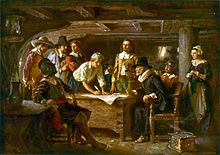

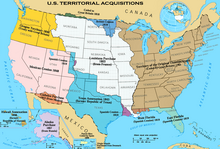

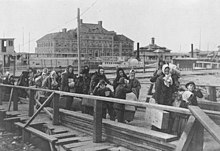


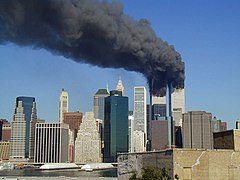

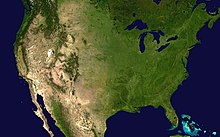


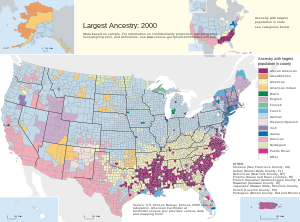







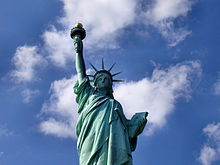
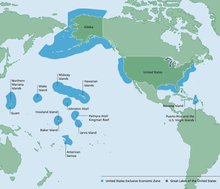




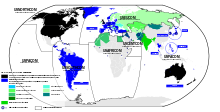

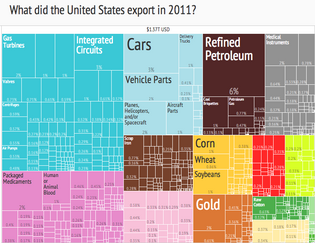
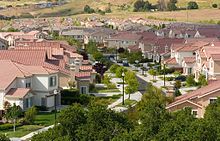

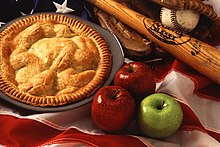
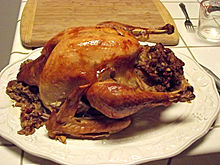
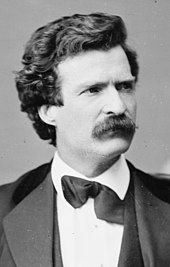


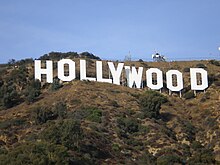


Nenhum comentário:
Postar um comentário